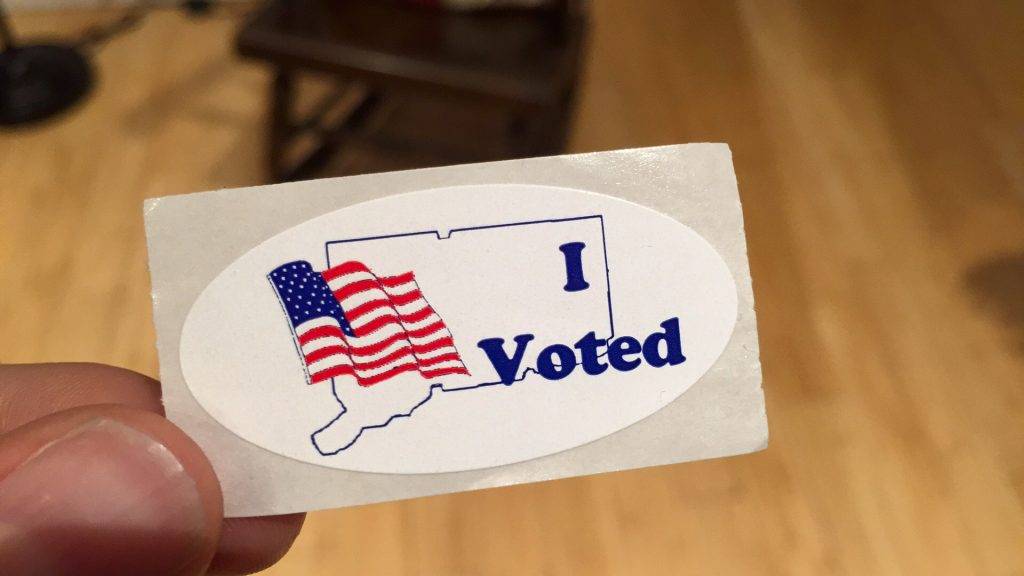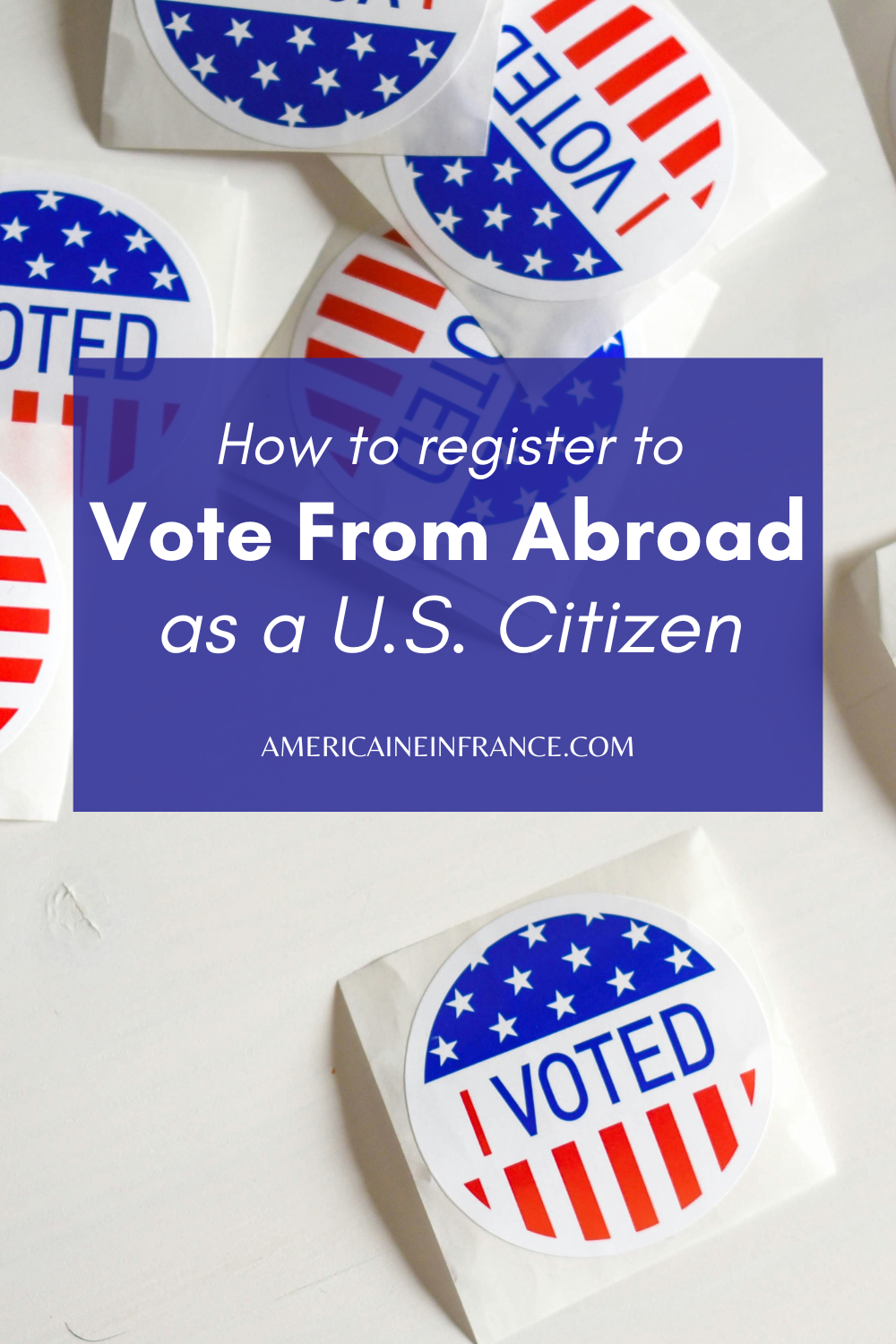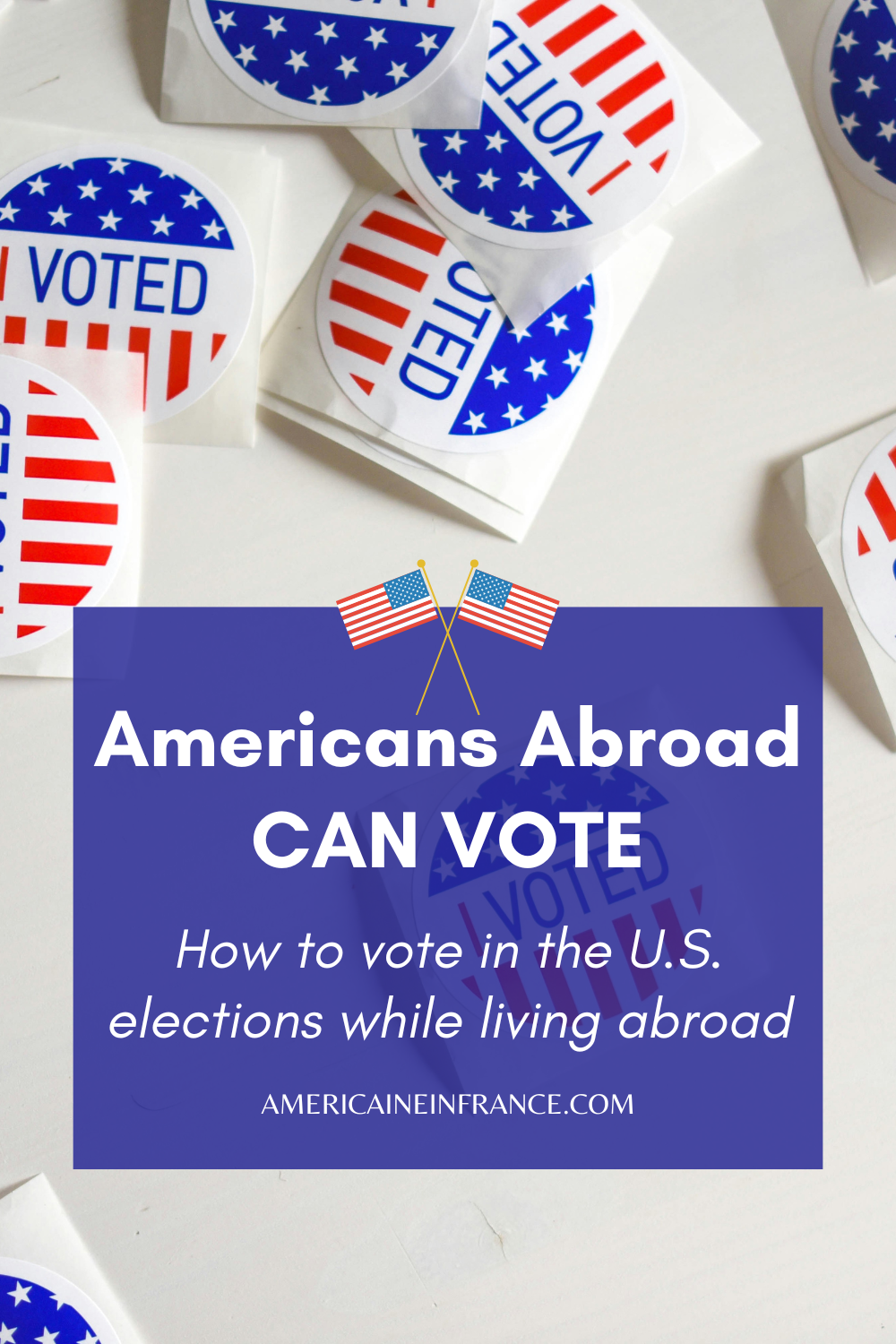This post may contain affiliate links, meaning that if you click and make a purchase, I may earn a commission at no additional cost to you. Read the full disclosure here.
Last updated: October 23, 2024
U.S. American citizens can vote no matter where they are in the world. Whether living abroad as an expat, studying overseas for a semester, or simply traveling out of the country, voting is our constitutional right. Here’s what you need to know about registering to vote from abroad as an American citizen.
Are American citizens abroad eligible for absentee voting?
Absentee voting is for those who cannot physically be present at the polling place. Sometimes referred to as mail-in voting, an absentee ballot is completed and submitted in advance.
Overseas U.S. citizens are eligible to vote absentee through the Uniformed and Overseas Citizens Absentee Voting Act (UOCAVA). Enacted by Congress in 1986, this act ensures federal voting rights for Service members, their eligible family members, and U.S. citizens residing outside of the United States. Many states have extended these rights to state and local elections as well.
Most U.S. citizens who reside abroad can vote in primary and general elections, even if they were born abroad and have never lived in the United States.
Why should you vote from abroad as an American expat?
If you don’t live in the country anymore, should you still vote?
I may not live in the United States anymore but I vote for my family and friends who do. I vote from abroad because I care about my home country. I vote from abroad because human rights and democracy are at risk. I vote for women and I vote for the LGBTQ+ community. I vote from abroad because what happens in America tends to not stay in America 😬
And yea, I also vote from abroad because, “no taxation without representation.” (In case you didn’t know, Americans abroad are required to file taxes and report on worldwide income.) I vote from abroad because my American citizenship makes it more difficult to open a foreign bank account and to make certain financial investments.
The truth is, U.S. laws and policies effect you even while abroad.
Millions of Americans live abroad but only a very small percentage vote from abroad. We can have a very real influence on the outcome of the elections if we make our voices heard.
How do you register to vote from abroad as a U.S. citizen?
Federal Post Card Application (FPCA)
By completing and sending in a Federal Post Card Application (FPCA), you can register to vote and request your absentee ballot at the same time. It is accepted in every U.S. state.
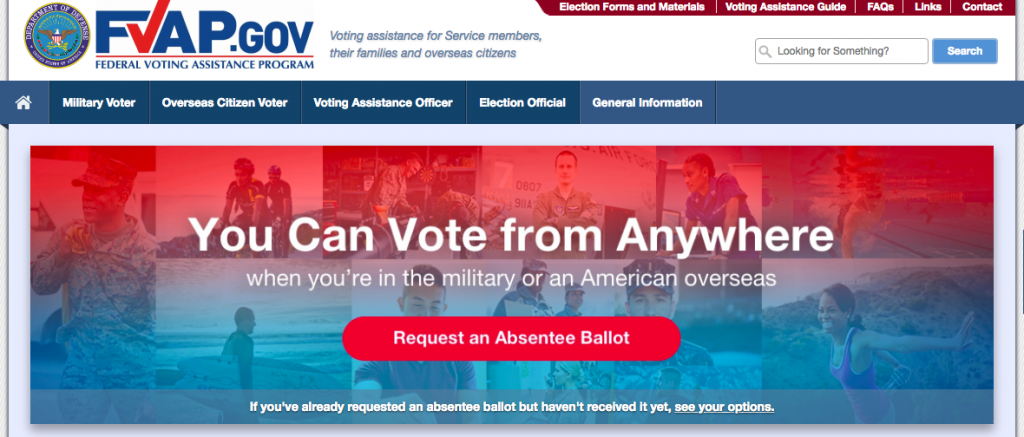
The simplest way to fill out the Federal Post Card Application form is directly on the FVAP website using the FPCA Online Assistant.
Start by entering the last state and town where you lived in the United States. This is your voting residence and helps to determine which offices you are eligible to vote for based on state law. You do NOT need to have any current ties to that address. If you have never resided in the United States, you can check to see if you are eligible through your parents’ or spouse’s last residence.
As usual, each state has its own way of doing things. For example, as a former resident of Connecticut, I only need to provide the last four digits of my Social Security number to identify myself, but you may need to provide the full number for your state.
Don’t worry! The FPCA Online Assistant will guide you through the form, letting you know which information needs to be completed in order to fulfill your state’s requirements. Upon finishing the form, the website will tell you if your state requires you to to print it out and mail it, or if you can just download the PDF and email it.
Where can you get help with registering to vote from abroad?
If you need help registering to vote from abroad, filling out your absentee ballot, or sending in your forms, here’s where you can get your questions answered:
fvap.gov
U.S. Embassies and Consulates
- Note: American embassies and consulates are NOT polling places
- Get general information about voting from abroad, as well as online and phone assistance
- Free mailing service from embassies and consulates to a U.S. postal sorting facility via a “diplomatic pouch”
- U.S. Embassy in France voting and contact information
Democrats Abroad
- In-person events around the world to help Americans register to vote
- Voter help for American expats in Paris
💡 Did you know? Democrats Abroad is recognized as its own “state” Party with eight voting members at the Democratic National Convention.
VoteFromAbroad.org
- Live voter support: live online sessions or request a 1:1 appointment
- Public Service provided by Democratic Party Committee Abroad (DemocratsAbroad.org)
Do you need to register to vote from abroad every year?
Americans residing abroad on a long-term basis should request their absentee ballot by submitting a new FPCA every year and each time they move. It’s best to do this in January or early on in the calendar year to ensure that you can participate in all the U.S. elections and primaries for which you are eligible.
Submitting a FPCA yearly protects your right to vote. If you do not submit it, your vote could be considered invalid, such as in a recount situation when numbers are close. Additionally, some states purge their voter registration lists, so registering yearly is the only way to ensure that your vote will be counted.
How do you fill out the absentee ballot?
When I fill out the FPCA, I always opt to receive my voting materials by email. You have a choice between mail, email/online, or fax.
The email I receive to vote from abroad typically has several attachments. There’s a letter with instructions and deadlines, a certificate to be signed declaring that I am an overseas voter, a ballot, and a list of candidates. For Connecticut, the certificate and the ballot need to be printed and snail mailed. It’s pretty easy. But this is not the case for all states…
Some states have extra steps to follow, such as including a secrecy envelope or signing the envelope flap. It is important that you follow the specific directions for your state. Failure to follow the directions could result in your ballot not being counted. The instructions are not always easy to understand, but organizations like Vote From Abroad provide live help as the election approaches.
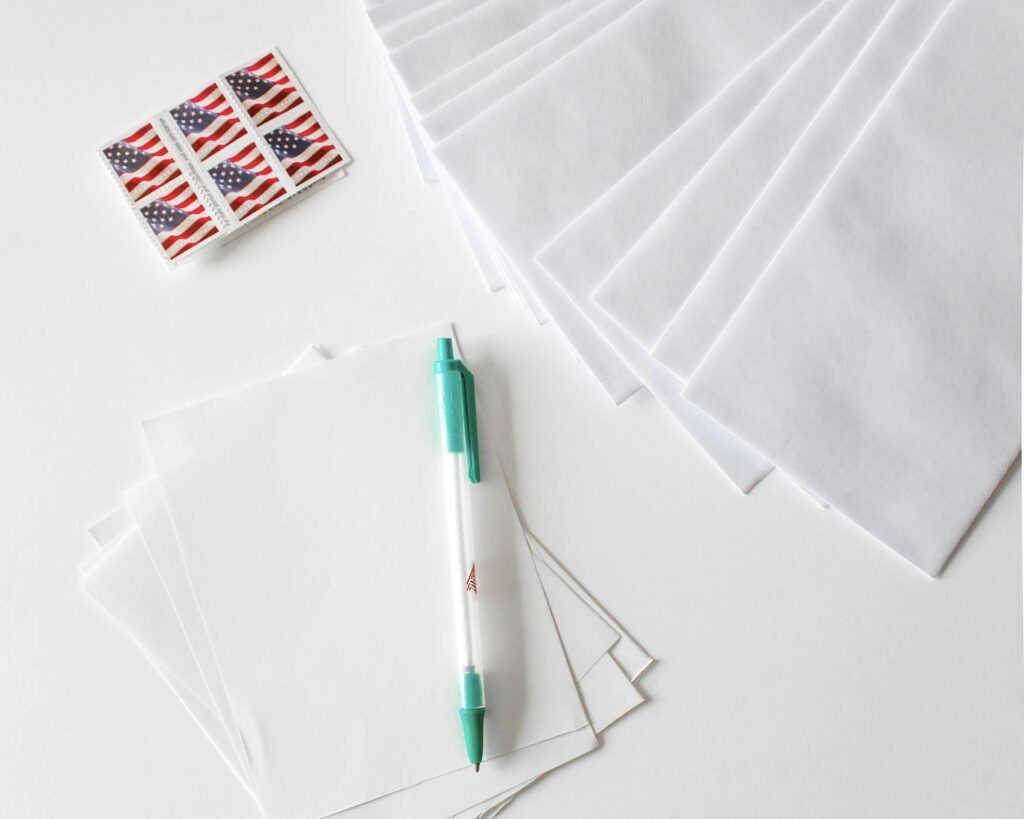
How do you return your absentee ballot from abroad?
Some states allow completed ballots to be returned by fax or email, while others require you to return paper forms by mail.
U.S. embassies and consulates usually provide a drop-off service. If you are able to go in person, you can drop off your completed ballot and the embassy will take care of getting it to the United States. In this case, you only need U.S. postage or you can print off the postage paid “Official Election Mail” envelope provided on the FVAP website. If you choose to go this route, be sure you drop it off several weeks in advance and/or check if the embassy has a deadline by when they mail the last batch.
Personally, I send my ballot from France by regular mail with regular international postage. It’s been my experience that the transit time between France and the east coast of the United States is generally between one to two weeks. However, I always send it as soon as possible and have never had problems with it being received in a timely fashion.
⚠️ URGENT: This year, some ballots being sent from abroad by registered mail have been getting stuck in U.S. customs! Check your tracking number and if you find that your overseas ballot is stuck, contact the U.S. Vote Foundation for help.
How can you find out if your absentee ballot was received?
Most states have online ballot tracking where you can check if your absentee ballot was received. If this is not an option, you can reach out directly to your town clerk or local election office to see if they received it.
➡️ Pro tip: Sometimes, state government websites are inaccessible from abroad. I use a VPN in these cases.
Did this guide help you? Say thanks with a cup of coffee!
What if you don’t get your absentee ballot in time?
Absentee ballots for federal elections are required to be sent no less than 45 days before an election and most states send out ballots about 30 days before primary elections.
➡️ Pro Tip: When you fill out the FPCA, you can indicate your preferred method for receiving voting materials from your election office. Selecting “email” will ensure there’s no delay in receiving your ballot!
If you do not receive your state absentee ballot in enough time to meet your state’s deadlines or if you vote in a state that requires mailing a paper ballot and want extra peace of mind, you can use the Federal Write-In Absentee Ballot (FWAB). This emergency backup ballot can be used to vote in federal elections. State laws vary as to whether you can use this ballot in local elections.
You can complete this ballot via the FWAB online assistant, by filling out this PDF (check state requirements for how to fill it out), or by picking up a hard copy at the nearest U.S. Embassy or Consulate.
There are no excuses. Make sure your voice is heard. VOTE!
